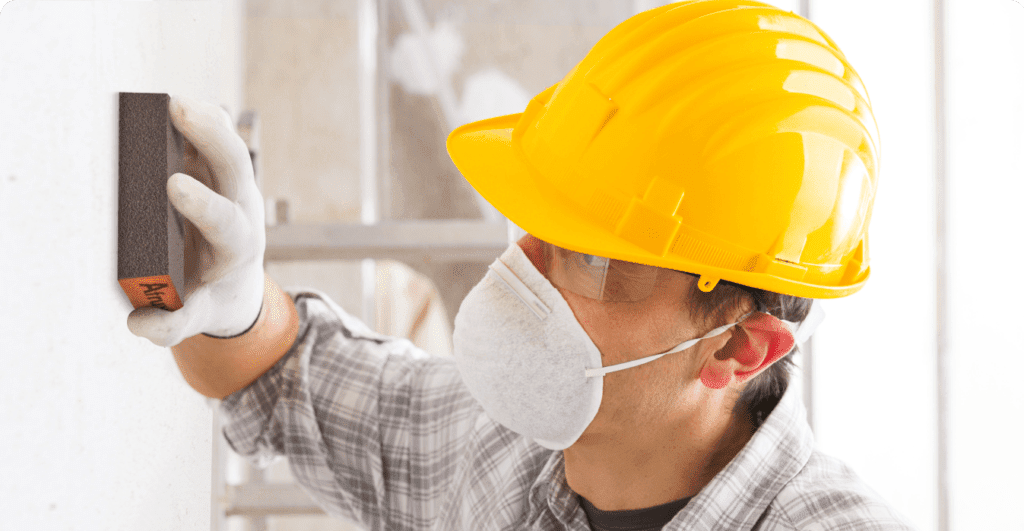Is it better to sand or sponge drywall? When it comes to drywall finishing, homeowners and professionals alike often face a common dilemma. This decision can significantly impact the quality and appearance of your finished walls. In this article, we’ll explore the pros and cons of both methods, helping you make an informed choice.
Drywall Sanding: The Classic Approach
Pros:
- Effective Smoothing: Drywall sanding is known for its effectiveness in creating a smooth, even surface. It can efficiently remove imperfections such as seams, bumps, and ridges.
- Versatility: Sandpaper comes in various grits, allowing you to choose the level of abrasion you need. This versatility makes it suitable for various drywall surfaces and finishing stages.
- Widely Available: Sandpaper is readily available at hardware stores and is relatively affordable.
Cons:
- Dust Issues: One major downside of sanding is the substantial dust it generates. This dust can be hazardous to your health and require significant cleanup.
- Labor-Intensive: Sanding can be physically demanding and time-consuming, especially for larger projects.
- Noise and Vibration: The noise and vibration from power sanders can be quite disruptive.
Drywall Sponging: A Cleaner Alternative

Pros:
- Dust-Free: The most significant advantage of drywall sponging is its dust-free nature. Wet sponging eliminates the need for extensive cleanup and reduces health risks associated with dust inhalation.
- Smooth Finish: When done correctly, sponging can produce a smooth and polished finish on drywall surfaces.
- Quieter and Less Vibration: Sponging is generally quieter and less physically demanding than sanding, making it a more comfortable option for some.
Cons:
- Learning Curve: Sponging requires a bit of practice to achieve the desired results. Beginners may find it challenging to get a consistent finish.
- Limited for Heavy Imperfections: For severe imperfections or irregularities, sponging may not be as effective as sanding.
Choosing the Right Method for Your Project
The decision between sanding and sponging depends on several factors:
- Project Size: For small touch-ups or minor repairs, sponging can be a quick and efficient solution. Sanding is more suitable for larger projects.
- Personal Preference: Some individuals prefer the cleaner and quieter aspects of sponging, while others may favor the traditional effectiveness of sanding.
- Skill Level: If you’re a novice, sponging might be a gentler introduction to drywall finishing. Experienced professionals may lean towards sanding for its precision.
- Imperfection Severity: If your drywall has severe imperfections, start with sanding to tackle the major issues. You can then finish with sponging for a polished look.
Conclusion
In the battle of “Sanding vs. Sponging,” there’s no one-size-fits-all answer. The choice depends on your specific project, preferences, and skills. For a clean, dust-free process, sponging is an attractive option, while sanding offers unparalleled effectiveness for leveling and smoothing surfaces. Ultimately, the best approach may involve a combination of both methods. Experiment and find the technique that works best for your drywall finishing needs.



